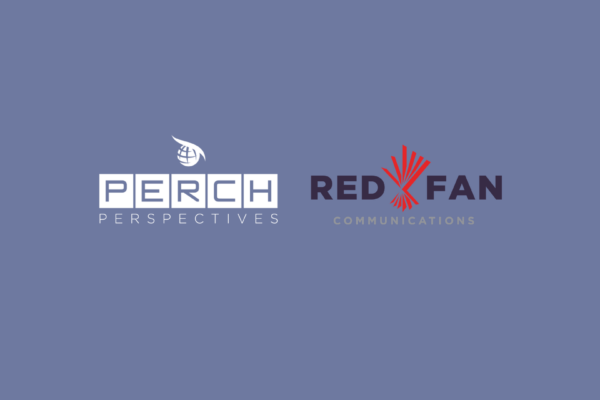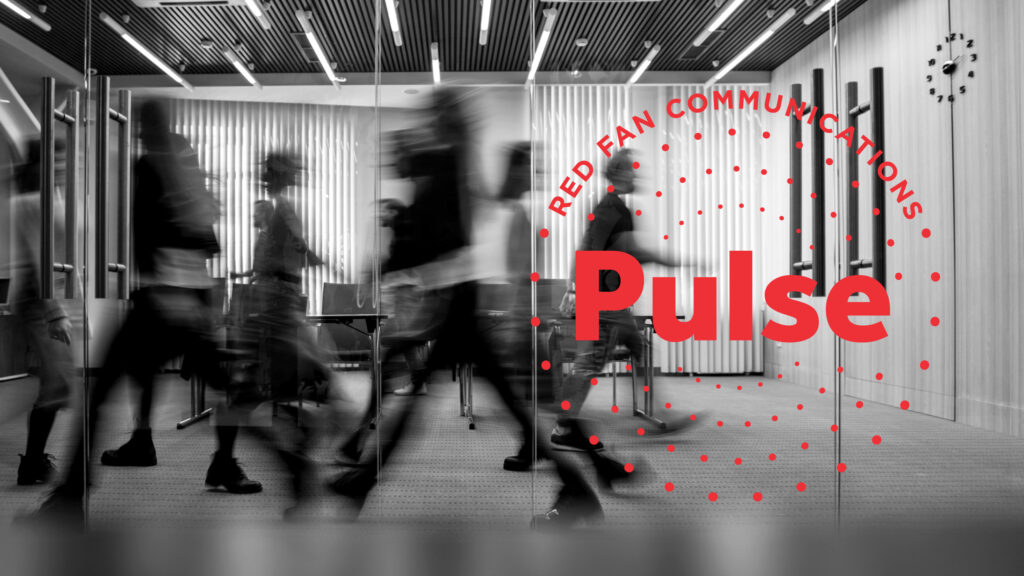
An interview with Arrissa Meyer and Steven Rahhal – Shareholders focusing on labor law in the Dallas office of Littler Mendelson, P.C., the largest global employment and labor law practice devoted exclusively to representing management.
At Red Fan, we are blessed to have a tremendous network of trusted experts we work with to foresee and address issues for our clients. In 2021, we saw human resource and supply chain issues hit companies across the country. Some of those themes have carried over, and 2022 will be an interesting year.
The recent rise of unionization, employee protests and workplace activism caught many C-suites off-guard, and not many organizations can honestly say they aren’t concerned about these issues.
Red Fan has a strong relationship with legal partners to ensure we are always protecting the interests of our clients. And one way we are continuing to help inform on these topics is our interview with Arrissa Meyer and Steven Rahhal. Arrissa and Steven are both shareholders focusing on labor law in the Dallas office of Littler Mendelson, P.C., the largest global employment and labor law practice devoted exclusively to representing management. Every CEO, CMO, CPO and board member should feel confident that they also can have a strong communications adviser and legal partner who work well together. Small and big issues will pop up for any company scaling, and this partnership has given our clients tremendous value.
In 2021, companies saw a significant uptick in unionization, employee protests and workplace activism. Will we continue to see this in 2022?
Yes, many of the external factors that caused this uptick are still present (COVID-19, racial injustice, economic uncertainty, and political unrest, just to name a few…), so it is certainly likely that 2021’s issues will carry over into 2022. Additionally, there’s a new sheriff in town at the National Labor Relations Board (NLRB), General Counsel Jennifer Abruzzo, who was appointed by President Biden and has made it known that she will be aggressively promoting and enforcing employees’ rights to engage in this type of activity to the fullest extent of the law.
Who is leading the charge when it comes to unionization, employee protests and labor activism?
Gen Z and millennial employees are at the forefront of the current labor movement. They are young, well-educated, tech-savvy, and progressive – inspired by the message of politicians like Bernie Sanders and Alexandria Ocasio-Cortez. They see labor rights as just one piece of the larger social justice movement, along with climate change, fighting racism, and #metoo, among other things. We expect that in 2022 and beyond, this demographic will continue to drive significant change in the workplace, and we will continue to see an increase in employee activism. CEOs must understand that the old messages and ways of communicating will need to be adapted to fit this new audience.
What employee concerns and objectives are driving the current movement and how are they different from what we’ve seen in the past?
Interestingly, these employees are not focused on the traditional topics that have driven union organizing in the past. While issues like wages, benefits, and workplace safety are always going to be present (especially while the pandemic drags on), these employees often focus on access to executive leadership or even a company’s Board of Directors and other stakeholders, and they expect them to address key social justice issues. Other demands revolve around seeking to have a voice in the strategic direction of the organization, not only as it relates to employees, but as it relates to customers, vendors, suppliers, the community, and world, at large. The increase in this atypical activity raises new issues for employers as to how they can best address these types of employees and these types of employee concerns.
Did companies find themselves on their back foot because they weren’t prepared for these issues?
Many companies assumed that they didn’t need to worry about employee protests, walkouts or strikes if they didn’t have a union, but as we saw with employees’ responses to Covid-19 concerns, mask requirements, and vaccine mandates, that was not the case. Worker action is no longer limited to traditionally unionized industries like manufacturing – we are seeing activity in tech offices, newsrooms, and coffee shops all over the news. These employees are fully conversant with their rights, how to advocate for those rights, and the communication tools they need to align and broadcast their message.
It is important to understand that, for the most part, all private-sector employees—blue collar or white collar, union or non-union—enjoy the right to engage in these types of activities under the National Labor Relations Act. Companies should recognize and make sure that the leaders in their organization understand that collective action under Section 7 of the NLRA, whether initiated by a group of employees or by an individual on behalf of others, is protected. Taking adverse action against employees for engaging in such conduct is unlawful.
What can CEOs and Senior Management do now to prepare themselves for employee activism or union organizing activity?
The number one thing that companies can do is to focus on positive employee relations and employment best practices, which will make unionization, employee protests, and mass resignations unnecessary.
We also recommend establishing a dedicated team consisting of representatives from leadership, human resources, legal, communications, and operations to meet on a regular basis to evaluate the company’s overall state of preparedness for such activity and monitor areas of exposure. In the absence of a specific threat or ongoing issue, the team’s tasks should include, among others:
- Conducting baseline and regular, follow-up vulnerability audits of facilities to identify areas of risk and preparing action plans to address identified risks;
- Overseeing ongoing positive employee relations and related supervisor training;
- Promoting compliance with the company’s policies and assuring that the rights of employees to join or refrain from engaging in protected activity is always respected;
- Reviewing employee communications channels to promote positive, timely, and lawful communications;
- Developing a plan for managing external communications and media requests; and
- Monitoring and assessing external risk factors.
Preparing for activism and union organizing requires buy-in from the very top levels in order to ensure the proper allocation of resources and that leaders are given the support they need to accomplish their goals.
The word unionization is thrown around a lot by protesters, supporting groups, press and others — but what do CEOs need to know about what it takes to form a union?
While membership in traditional unions returned to a historic low in 2021 (just 6.1% in the private sector), we have seen the rise of non-traditional organizations made up of groups of individuals (including traditional employees, temporary employees, and even contractors) who seek to advocate for worker rights and social justice issues in the workplace. Workers can band together, act collectively, and call themselves a union all they want, but it takes more for them to be entitled to legal recognition as a union by an employer and the right to bargain.
First, the putative union must demonstrate that it actually has support from workers in the group it seeks to represent by collecting signatures on authorization cards or a petition saying they want the union to represent them. Then, if at least 30% of workers sign cards or a petition, the NLRB will conduct an election. Alternatively, the employer may voluntarily recognize the union if a majority of workers have signed cards. The union must go through one of these two methods to be entitled to representation rights.
That being said, while these non-traditional organizations do not have the ability to compel an employer to sit down and negotiate with them, a group of activists may still pressure employers and advocate for workers through other very powerful means. These include work stoppages, harmful public relations campaigns, and other activities.
Can companies avoid the hassle of a full-blown union campaign or employee protest by working with employee groups that form or even preemptively starting an employee committee to deal with employee concerns?
This might sound like a good solution, but giving in to demands or negotiating with small groups of employees raises significant legal concerns. As explained above, if the group does not have the majority support of employees it claims to represent, it does not have the same rights as a majority union. But more importantly, it is actually unlawful for an employer to bargain or “deal with” such a group on behalf of a broader group of employees unless it in fact represents a majority of those employees.
Companies also need to be careful with employee committees. When an employer creates and sponsors an employee group where discussion turns into the committee presenting proposals on subjects like employee pay, employee benefits, or work schedules, there is a risk that the NLRB might find that the employer has improperly created the equivalent of an employer-dominated union. The law prohibits such organizations to prevent companies from creating “sham” unions that make employees feel like they have representation, when they are really controlled by management. Thus, employers who seek to establish committees or groups composed of both employees and management to discuss workplace issues should consult with counsel regarding best practices and compliance with National Labor Relations Act.
How has the pandemic changed organizing and the unionization process?
Like every other aspect of life, the labor world has pivoted to electronic communication and remote work. Although this shift had already started to occur before the pandemic, union organizing is now taking place online over email, text message, social media, and by video conferences. Even the NLRB is conducting elections by mail ballot and counting votes over Zoom!
Why is an employment/labor lawyer working with your HR and communications department essential, and how early do you need to bring them into the mix to prepare in advance should something occur?
It’s important to involve an employment/labor lawyer as early as possible because what you say—internally or externally—can and will be used against you! Labor is a highly specialized practice area with some counterintuitive quirks that many are not aware of, especially those who are based in an area of the country that has historically not had much union activity. Experienced legal counsel can make sure that your actions and statements now not only comply with your legal obligations, but also preserve your legal position for the future.





